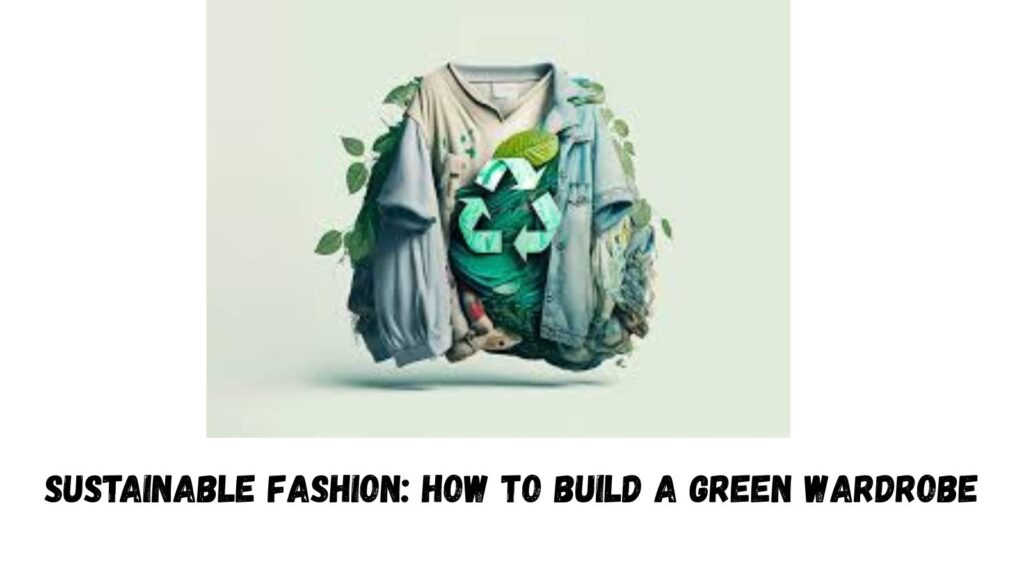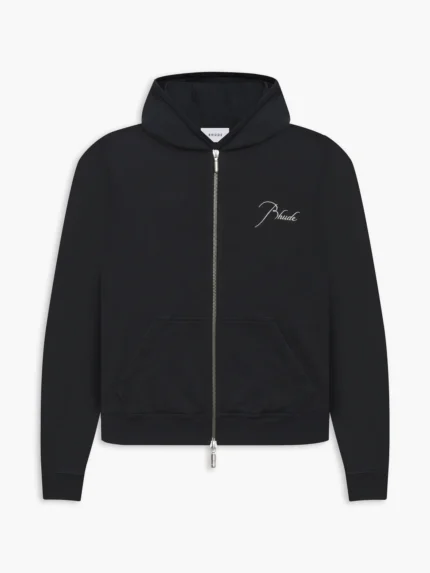Sustainable Fashion: How to Build a Green Wardrobe
Fashion is a powerful form of self-expression, but its environmental impact has become a growing concern. More people are noticing the climate crisis. So, consumers want to make better choices in all parts of their lives, especially in fashion. A great way to cut your carbon footprint and support ethics is to build a sustainable wardrobe.
In this article, we’ll look at how fast fashion harms the environment. We’ll also discuss sustainable fashion and share tips for building an eco-friendly wardrobe. We’ll also look at real-world examples, stories, and the latest data on how sustainability is transforming the fashion industry. By the end of this guide, you’ll know how to shop, style, and care for your clothes. You’ll also help protect our planet.

The Environmental Impact of Fast Fashion
Fast fashion refers to the rapid production of cheap, trendy clothing, often made in mass quantities and at low cost. But this model comes at a significant environmental cost.
1. Overproduction and Waste
Fast fashion brands produce millions of garments every year, with many of these items ending up in landfills. In fact, an estimated 92 million tons of textile waste are generated globally each year. The Ellen MacArthur Foundation found that about 73% of clothing made ends up in landfills or is burned. This adds to pollution and waste.
Fast fashion encourages people to treat clothing as disposable, purchasing cheap items that may only last for a season or two. This cycle adds to the waste problem. It also raises the demand for raw materials like cotton and polyester. This demand can harm the environment even more.
2. Water Consumption
The textile industry is one of the largest water consumers in the world. It takes approximately 2,700 liters of water to make a single cotton T-shirt, equivalent to the amount of water one person drinks in three years. Also, water used in dyeing textiles can get polluted with harmful chemicals. This affects both the environment and nearby communities. The Aral Sea in Central Asia was once one of the largest lakes in the world. It has shrunk a lot because of the water needed for cotton farming.
3. Chemical Pollution
Many fast fashion brands use harmful chemicals to make their clothes. This includes toxic dyes and pesticides used in cotton farming. These chemicals can leach into the environment during production, washing, and disposal. The fashion industry causes 20% of global water pollution. This is mainly from chemicals used in dyeing and finishing textiles.
4. Carbon Footprint
The fashion industry also contributes significantly to greenhouse gas emissions. Garments contribute to 10% of global carbon emissions. That’s more than all international flights and shipping put together. Using fossil fuels for synthetic fibers, such as polyester, raises the industry’s carbon footprint.
5. Labor Exploitation
In addition to its environmental impact, fast fashion is often linked to unethical labor practices. Much of the world’s inexpensive clothing comes from developing countries. There, workers—often women and children—earn less than minimum wage. They also face unsafe working conditions and lack basic rights and protections.
The Rise of Sustainable Fashion
As awareness of the damaging effects of fast fashion grows, more consumers are seeking alternatives. Sustainable fashion aims to reduce the environmental and social effects of making clothes. This ranges from how raw materials are sourced to what happens at the end of a garment’s life. Creating a green wardrobe goes beyond just buying eco-friendly clothes. It means taking a full approach to fashion. This supports ethical practices, reduces waste, and encourages lasting wear.
What Is Sustainable Fashion?
Sustainable fashion means clothing, accessories, and shoes made in a way that cares for the environment and society. This includes:
- Ethical sourcing means using materials that are good for the planet. This includes organic, recycled, or regenerative options. Examples are organic cotton, hemp, and Tencel.
- Minimizing waste:
- Reduce overproduction.
- Reuse fabrics.
- Promote circularity by designing clothes for recycling or repurposing.
- Fair labor practices: Ensuring workers are paid fairly, work in safe conditions, and are treated with respect.
- Durability and quality: Choose items made to last. Don’t settle for cheap goods that wear out fast.
How to Build a Green Wardrobe: Practical Tips
Creating a sustainable wardrobe doesn’t mean you need to overhaul your entire closet at once. Start with small, intentional changes that make a big impact over time. Here are some strategies for curating a more eco-friendly wardrobe:
1. Invest in Quality Over Quantity
One of the best ways to build a sustainable wardrobe is to invest in high-quality, timeless pieces that will last for years. While these items may cost more upfront, they tend to be made from better materials and are designed to withstand wear and tear. Quality items often look better with age, making them a long-term investment rather than a fleeting trend.
Brands like Patagonia and Everlane focus on durable clothes. Their garments are made to last and withstand the test of time. Patagonia’s “Worn Wear” program even encourages customers to buy used clothing to extend the life cycle of garments.
2. Choose Natural, Organic, and Recycled Fabrics
When shopping for new clothes, look for items made from natural, organic, or recycled materials. Organic cotton, linen, wool, hemp, and Tencel are excellent choices. They have a smaller impact on the environment than regular fabrics. Also, picking clothes made from recycled fibers, such as recycled polyester or nylon, helps cut down on waste and the need for new materials.
Fun Fact: H&M’s Conscious Collection uses organic cotton and recycled polyester. These sustainable materials help reduce the environmental impact of their clothes.
3. Opt for Secondhand and Vintage Clothing
One of the most sustainable choices you can make is to buy secondhand. Vintage clothing stores, thrift shops, and online sites like Depop, ThredUp, and Poshmark offer unique and quality items. These items are already made, so they cut down the need for new resources.
Many fashion lovers are turning to secondhand shopping. It helps them create unique and eco-friendly styles. Influencers like Emma Chamberlain made thrift shopping trendy. It shows that it’s both stylish and good for the planet.
4. Learn How to Care for Your Clothes
Extending the life of your garments is a key component of sustainable fashion. Washing clothes in cold water, air-drying them, and fixing damaged items can cut down on buying new clothes. This also helps reduce clothing waste. By learning how to mend small tears or replace buttons, you can keep your clothes in good condition for much longer.
Pro Tip: Use a Guppyfriend bag or a similar product. It captures microplastics from synthetic fabrics during washing. This helps reduce plastic pollution in our oceans.
5. Support Ethical Fashion Brands
Support brands that prioritize sustainability and ethical practices in their production processes. Many fashion brands are now transparent about their sourcing, production, and labor practices. Check for certifications like Fair Trade, Global Organic Textile Standard (GOTS), or B Corp. This way, your purchases match your values.
Example: Stella McCartney is a high-end fashion brand that has been at the forefront of sustainable fashion for years. They use sustainable materials, such as organic cotton and recycled polyester. They are also committed to lowering their carbon footprint.
Conclusion
Creating a sustainable wardrobe isn’t about being perfect. It’s about making smart choices. These choices help lower your environmental impact and promote ethical practices. Choose quality over quantity. Invest in eco-friendly materials. Buy secondhand and care for your clothes. Support sustainable brands. This way, you help the planet and express your unique style.
Sustainable fashion is a journey. Each small change can greatly reduce fast fashion’s harm to our planet. Consumers can push for more sustainable choices in fashion. Together, we can start a fashion revolution that helps both people and the planet.
The REB Import and Export Plug-In: Revolutionizing Data Management for Businesses
FAQs About Sustainable Fashion
The best materials for sustainable fashion include organic cotton, linen, hemp, Tencel, and wool. Recycled materials, such as recycled polyester, are also great options for reducing waste.
Make your wardrobe eco-friendly! Shop secondhand, repair old clothes, and pick high-quality items that last longer. Thrift stores and online resale platforms offer affordable sustainable options.
Sustainable fashion can be more expensive upfront, but it tends to be more durable and last longer, making it a better investment in the long run. Additionally, buying secondhand or focusing on quality over quantity can help save money.
Absolutely! Sustainable fashion embraces timeless pieces. Many sustainable brands also make stylish, trendy clothing. Look for brands that offer both eco-friendly and fashion-forward options.
You can cut down on clothing waste. Buy fewer items and focus on quality. Recycle old clothes and donate or resell what you don’t wear. Also, repair damaged clothing instead of tossing it out.






